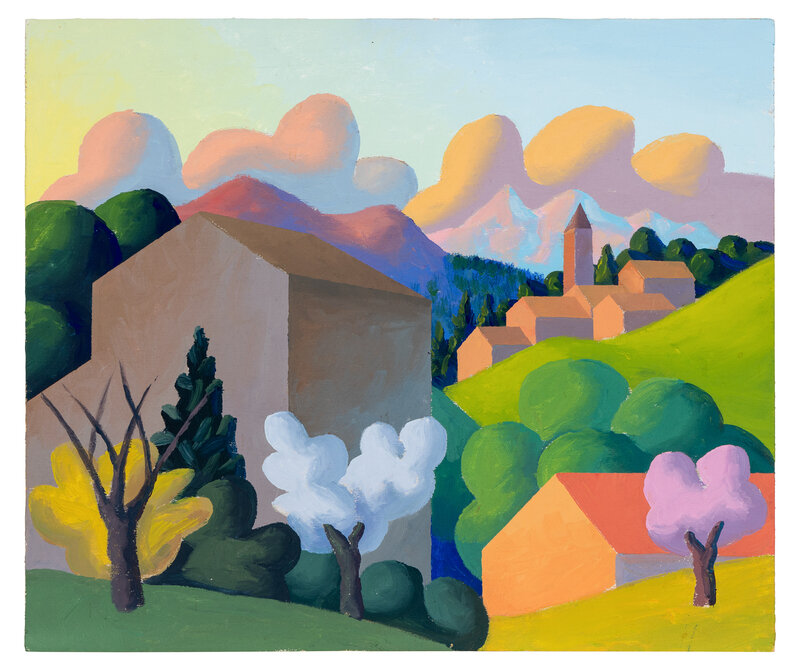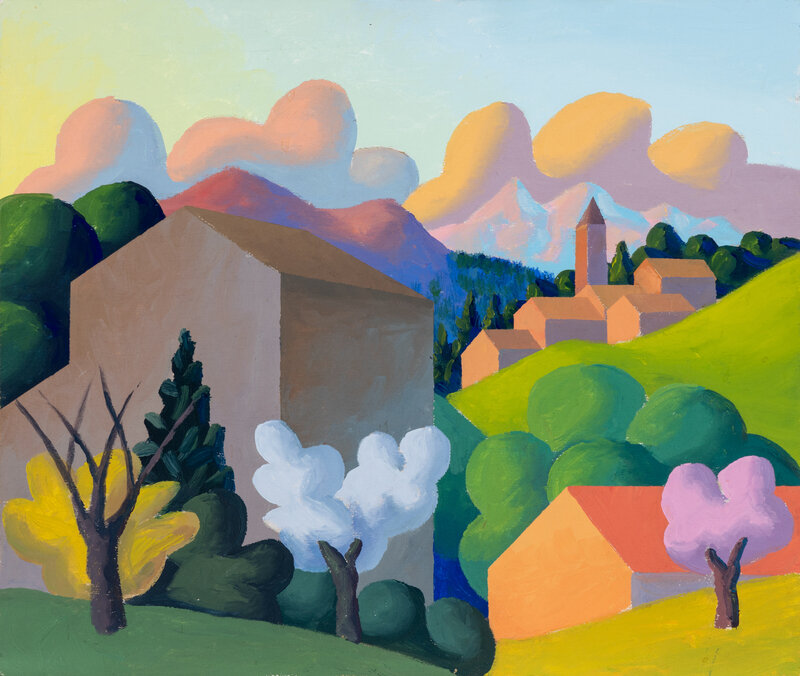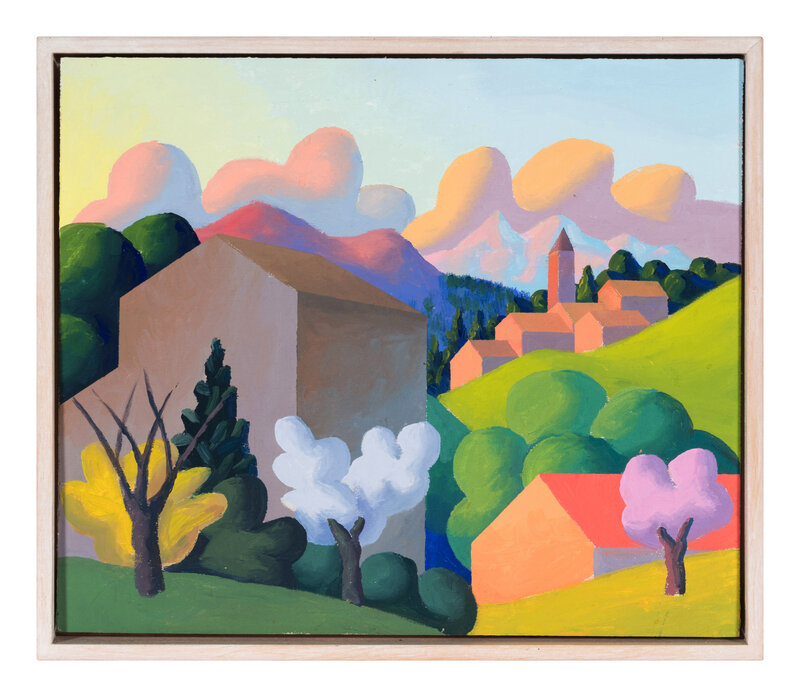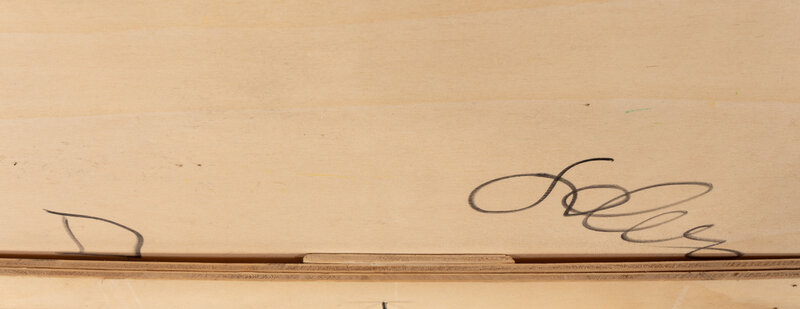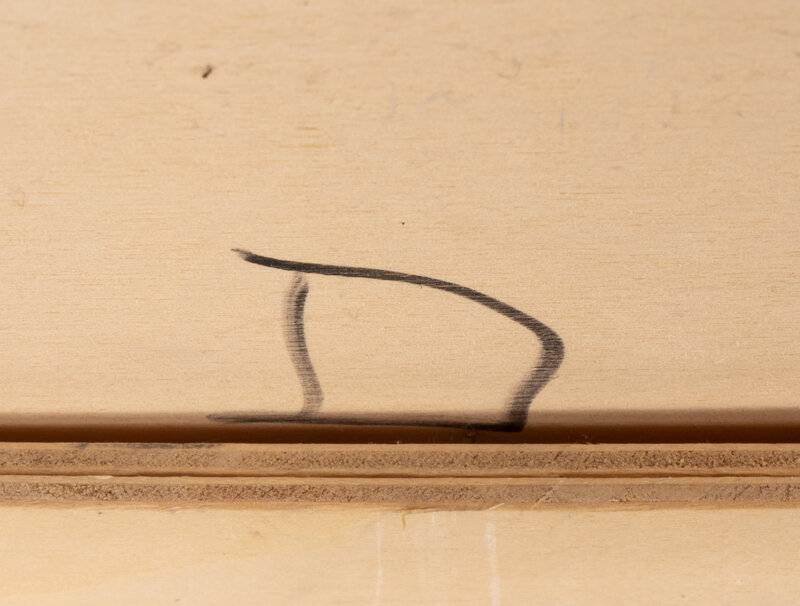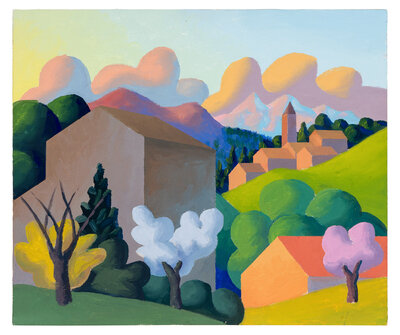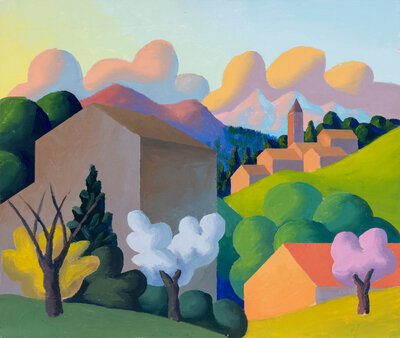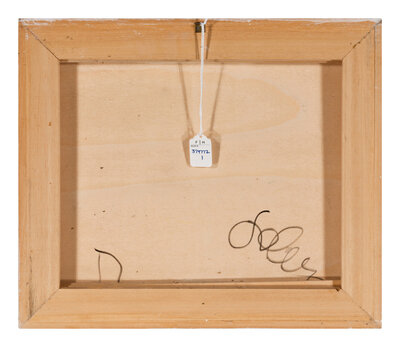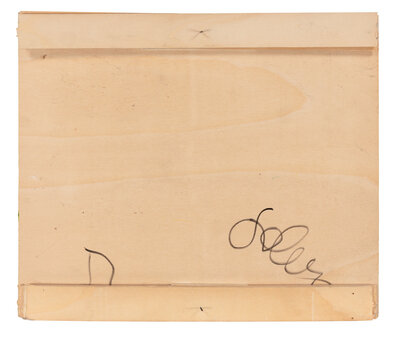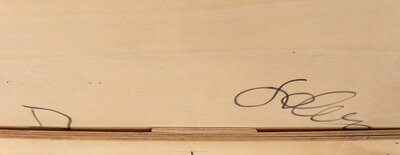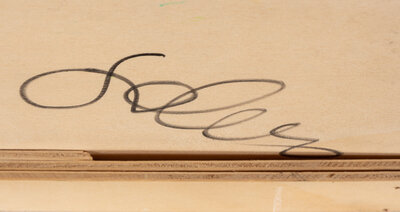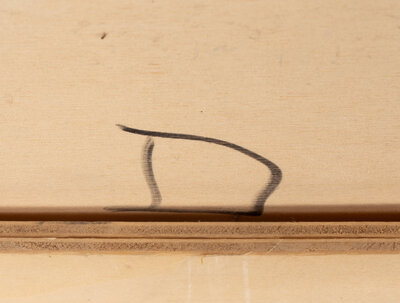Condition Report
Contact Information
Auction Specialist
Lot 2
Salvo
(Italian, 1947-2015)
Senza Titolo, 1997
Sale 2104 - Post War and Contemporary Art
Nov 14, 2024
10:00AM ET
Live / New York
Own a similar item?
Estimate
$50,000 -
70,000
Price Realized
$57,150
Sold prices are inclusive of Buyer’s Premium
Lot Description
Salvo
(Italian, 1947-2015)
Senza Titolo, 1997
oil on board
signed Salvo (verso)
14 x 16 1/2 inches.
The Edward and Nancy Tepper Collection, Champaign, Illinois and New York, New York
This work has been reviewed by the Archivio Salvo in Turin, no. S11997-75.
Provenance:
Studio d'arte Raffaelli, Trento, Italy
Acquired from the above by the present owner in 1997
Lot essay:
In this untitled painting from around 1997, Senza Titolo, blocks of smoothly applied corals, greens, purples, and pinks make up the countryside as a mix of organic and inorganic shapes. Man-made buildings are conveyed in blocky forms while the bushes, clouds, and trees of nature are defined by circles and wide curves. However, these pastel colors and simplified shapes inherent to the paintings of Italian artist Salvo (1947-2015) reveal a careful and purposeful exploration of color, light, and art history that is belied by their fantastical outlook.
Salvo (the artistic pseudonym of Salvatore Mangione) was born in Sicily. Though he maintained close ties to Sicily, he based his mature art practice in Turin, where he would live for most of his life. In the 1960s and early 1970s, he was a part of the Arte Povera movement. Widely regarded as a branch of conceptualism, Arte Povera was a movement of young artists in urban centers in Northern and Central Italy who championed a broader use of media—mirrors, rags, rocks—and sought to disrupt contemporary expectations, particularly of what defined “high” art. However, beginning around 1973, Salvo would dramatically shift focus from his conceptual works, primarily rooted in photography and the use of language, to a more pictorial format of his paintings based on landscape, mythology, and the art historical tradition, as defined by increasingly exaggerated and artificial forms and colors.
Salvo’s theatrical use of color and light emphasizes the natural world and, importantly, the individual’s response to it. The artist was known to paint similar vistas repeatedly at different times of day, particularly during periods of transition such as at dawn and dusk. For him, these times reflected “a moment of suspension, of wonderment in the face of nature.” [i] For instance, he painted several springtime and autumnal scenes of the same rolling hills and Italianesque village, complete with church and bell tower, depicted in Senza Titolo in the late 1990s and early 2000s.
In Senza Titolo itself, the importance of the sun and the changing light’s role in the landscape is illustrated through the use of color. The composition features a strong light source at the far left, set off with bright yellow, with shadows on the landscape projecting to the right. In the lower left quadrant, as of yet untouched by the sun, Salvo applies more natural colors—deeper greens and yellows and browns, as might be expected within the landscape. However, in the areas bathed in sunlight at the top and right of the composition, Salvo’s choice is more stylized—fuchsias and light oranges and baby blues. Thus, this moment of transformation is revealed.
The bright colors and the collage-like layering of the geometric forms in space in such colors as bubble gum pink have led to some more juvenile readings of Salvo’s work, which the artist vehemently rejected. As he explained:
This interpretation was a painful discovery for me: my painting is not intended to be childish, and indeed it is very precise in its outlines. But I understand how it can be misleading. First of all, it has a sort of fairy-tale atmosphere: I’ve always been fascinated by miracles, and also by fairy tales, but repetition of the same events every day means we lose sight of the irony…There has to be at least some correspondence with reality. Since our world of feeling and thoughts depends entirely on the so-called objective world, I don’t see what we should communicate if not in relation to it.[ii]
Therefore, while strongly idyllic and cheerful in their intent to reflect the miraculous in what may otherwise be viewed as the banal, Salvo’s paintings, anchored by his awareness of the place’s identity and the environment, seek to reflect the true nature of the landscape and the viewer’s response to it. As Salvo has said “I don’t trust artists whose works don’t reflect something of their life and where they come from.”[iii] Here, this opinion rings particularly true in Senza Titolo where Salvo molds the reality of a local Italian village into a festive show championing color and light.
Bibliography:
Salvo. “A return to painting after morning light.” Interview by Angela Vettese, Il Sole 24 Ore, April 21, 1986. In Io Sono Salvo: Works and Writings 1961-2015. Nero Editions, 2023.
Salvo. “Salvo: I believe in common sense, in what may appear to be Mundane.” Interview by Floriana Piqué. Flash Art no. 120, May 1984. In Io Sono Salvo: Works and Writings 1961-2015. Nero Editions, 2023.
Salvo. “Vernissage.” Interview by Franco Fanelli, supplement to Il Giornale dell’Arte no. 53, February 1988. In Io Sono Salvo: Works and Writings 1961-2015. Nero Editions, 2023.
[i] Salvo, “Salvo: I believe in common sense, in what may appear to be Mundane,” interview by Floriana Piqué. Flash Art no. 120, May 1984, in Io Sono Salvo: Works and Writings 1961-2015 (Nero Editions, 2023), 551.
[ii] Salvo, “A return to painting after morning light,” interview by Angela Vettese, Il Sole 24 Ore, April 21, 1986, in Io Sono Salvo: Works and Writings 1961-2015 (Nero Editions, 2023), 556.
[iii] Salvo, “Vernissage.” Interview by Franco Fanelli, supplement to Il Giornale dell’Arte no. 53, February 1988, in Io Sono Salvo: Works and Writings 1961-2015 (Nero Editions, 2023), 562.
